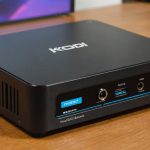Understanding Serverless Architecture
Serverless computing refers to a cloud-based architectural design where execution is managed by a cloud service provider, while developers focus solely on coding. Unlike traditional models, where infrastructure maintenance is a burden on developers, serverless environments handle the allocation, scaling, and upkeep of servers automatically. This approach primarily involves the use of cloud functions, also known as “Functions as a Service” (FaaS).
Components and Characteristics
The essence of serverless architecture lies in its components. Central to this is cloud functions—the small, stateless code units executed in response to triggers. Complementing these are services such as database instances, event gateways, and an API gateway, ensuring a seamless operational flow.
Also read : Transforming Urban Mobility: Leveraging AI to Enhance Traffic Flow in City Transportation Systems
Benefits
Adopting serverless computing brings numerous benefits. It offers cost-efficiency, as you only pay for the computation time used. Additionally, it ensures scalability, handling varying loads without manual intervention. The developer experience is enhanced, allowing concentration on core functionality rather than infrastructure tasks.
Common Use Cases
Practical scenarios include real-time file processing, RESTful API backends, and back-office workflows. In essence, any application that can benefit from reduced administrative overhead and increased agility stands to gain from serverless solutions.
In the same genre : Building a Safe Haven for AI Model Development: Harnessing Docker Containers for Enhanced Security
Importance of Monitoring in Serverless Environments
Monitoring in serverless environments presents unique challenges due to their inherently dynamic nature. Traditional monitoring practices aren’t always applicable, as serverless architectures excel in scaling automatically and operating with ephemeral functions. These features can obscure performance bottlenecks and anomalies, making comprehensive performance tracking essential.
Effective performance tracking in serverless applications revolves around understanding the transient lifecycle of functions. By monitoring invocation count, execution duration, and concurrency rates, organizations can gain insights into application performance. Additionally, logging and tracing are pivotal for piecing together the interplay of microservices within the architecture.
Key performance indicators (KPIs) are instrumental in ensuring optimal performance in serverless environments. Metrics such as latency, error rates, and cold start duration are critical in evaluating real-time applicability and user experience. Addressing these serverless challenges through KPIs allows for proactive optimization and the maintenance of service reliability.
Proper monitoring is not merely about identifying issues but plays a crucial role in enhancing application performance. Detecting and addressing inefficiencies promptly helps prevent potential downtimes and ensures that applications remain responsive and reliable. In conclusion, robust monitoring practices are indispensable for navigating the complexities of serverless technology successfully.
Logging Best Practices for Serverless Applications
Navigating the complexities of serverless applications requires mastering effective logging techniques. Implementing structured logging is crucial for error tracking in serverless functions. This involves formatting log messages consistently so that they can be easily parsed and understood, which aids in identifying and resolving issues promptly.
Essential Logging Strategies
Adopting a strategic approach to logging ensures both efficiency and accuracy. Start by determining which events and state changes need to be logged based on their importance to the application’s functionality and performance. Prioritising logs that capture error occurrences and state transitions allows developers to identify potential bottlenecks swiftly.
Implementing Structured Logging
Structured logging involves using key-value pairs to record log data, facilitating better organisation and searchability. This method enhances the precision of error tracking by allowing developers to filter and dissect log data efficiently. Employing JSON or XML formats for logs can enable seamless integration with various log management tools.
Tools and Platforms for Log Management
Several platforms help manage and analyse logs effectively. Tools like AWS CloudWatch, Google Cloud’s Stackdriver, and Azure Monitor are popular among developers using serverless architectures. These platforms provide robust search capabilities, real-time log analytics, and alerting systems, ensuring that errors are promptly addressed and managed.
Implementing these best practices elevates the reliability and performance of serverless applications while simplifying the debugging process.
Tools for Monitoring and Logging in Serverless
Delving into the world of monitoring tools and logging platforms reveals a range of options tailored for serverless environments. Choosing the right tools can profoundly impact system performance and operational insights.
Overview of Popular Monitoring Tools
Monitoring tools in serverless architecture primarily focus on real-time tracking of system performance and identifying potential bottlenecks. Key players include AWS CloudWatch, which provides comprehensive insights with minimal setup, and Datadog, known for its extensive integrations across various services. These tools capture vital metrics, helping organizations maintain optimal performance.
Overview of Popular Logging Platforms
Logging platforms serve as the memory of your system, with services like Splunk and Loggly leading the pack. They excel in recording and visualizing system logs, providing actionable insights that facilitate troubleshooting and performance optimization. Effective log management is crucial in identifying latent issues swiftly.
Comparison of Tools Based on Features and Pricing
Evaluating monitoring and logging tools hinges on features like scalability, ease of use, and cost. AWS CloudWatch stands out for its tight integration with AWS services, albeit at a premium price for extensive use. Conversely, Loggly offers a balance of features and affordability. Organizations should assess their specific needs against available offerings, considering factors like scalability and ease of integration.
Implementing Monitoring and Logging: Step-by-Step Guide
Implementing monitoring and logging in serverless applications can initially seem daunting, but with clear implementation strategies and practical examples, this process can be straightforward and effective.
Step-by-Step Implementation of Monitoring Solutions
Initiating a monitoring solution involves several key configuration steps. Start by identifying the metrics crucial to your application. Key performance indicators (KPIs) such as response times, error rates, and resource utilization often top the priority list. Implement a monitoring tool by configuring it to gather and visualize these metrics. Tools like AWS CloudWatch or Google Cloud Monitoring provide robust interfaces for setting up custom dashboards and alarms.
Configuring Logging Mechanisms
Configuring logging mechanisms in serverless applications streamlines troubleshooting and performance analysis. Begin by ensuring your application is set to output logs at significant lifecycle events. Configure your logging service, such as AWS CloudWatch Logs or Google Cloud Logs, to automatically capture and store these logs. Properly configured logs allow for real-time analysis and historical data auditing.
Real-World Monitoring and Logging Integrations
In practice, many businesses successfully integrate monitoring and logging solutions. A well-known retail company, for instance, enhanced their serverless operations by integrating AWS monitoring tools, resulting in improved response time by 15%. These real-world practical examples showcase the tangible benefits of a robust monitoring and logging framework.
Troubleshooting Common Issues in Serverless Monitoring
Identifying performance issues in serverless environments can be challenging. Diagnostic tools are crucial in troubleshooting techniques and need to be leveraged effectively to resolve these issues. One common performance concern is latency—often caused by cold starts or inefficient code. To combat this, tools like AWS X-Ray or Azure Monitor can offer insights by tracking and analysing the flow of requests through your application. This allows you to pinpoint slow segments or bottlenecks.
Utilizing these diagnostic tools not only assists in immediate resolution but also in proactive monitoring. By setting up alerts for anomalies, such as unexpected spikes in execution time or memory usage, potential problems can be addressed before they escalate. Techniques such as Fine-grained monitoring can anticipate and prevent many performance issues by providing detailed data about executions.
Furthermore, logging and tracing are essential during diagnostics. They enable a deeper understanding of request paths and reveal which parts of your application might require optimization. Remember, effective troubleshooting is an iterative process that benefits from continuous improvement and analysis, fostering an environment for efficient serverless applications.
Case Studies: Effective Monitoring and Logging
In exploring real-world applications, various companies have implemented effective monitoring and logging strategies that yielded significant benefits. One notable case study involves a digital marketing firm that faced challenges with tracking and optimising its serverless applications. By integrating advanced monitoring tools, the company managed to streamline processes, allowing them to identify and rectify issues almost instantaneously.
A key lesson learned from these success stories is the importance of choosing the right tools tailored to specific needs. One enterprise, for instance, utilized cloud-based solutions to achieve greater scalability and flexibility in their operations. This proactive approach not only reduced downtime but also led to substantial cost savings by minimizing unnecessary resource usage.
Moreover, proper monitoring and logging have profound impacts on the success of serverless applications. It enhances visibility into application performance, allowing teams to pinpoint inefficiencies quickly. Such in-depth analysis reveals insights that are pivotal for continuous improvement and innovation.
Ultimately, these case studies illustrate that with diligent monitoring and logging, companies can elevate operational efficiency, drive down costs, and foster a more responsive and agile development environment.
Future Trends in Serverless Monitoring and Logging
As the digital landscape evolves rapidly, future technologies are poised to transform serverless monitoring and logging in remarkable ways. One of the most notable emerging technologies influencing this domain is Artificial Intelligence (AI). AI is expected to enhance monitoring by predicting anomalies and automating responses in real-time, reducing manual interventions.
Market trends indicate a shift towards more unified platforms that will integrate all aspects of serverless infrastructure management. This consolidation aims to ensure seamless operation and provide a holistic view of the system’s health. Such platforms could greatly enhance efficiency and reduce the complexity currently associated with fragmented tools.
In terms of future innovation in monitoring, edge computing is gaining traction. With computing power moving closer to data sources, monitoring practices are anticipated to become more decentralised. This change promises reduced latency and an improved user experience, particularly in applications requiring swift data processing.
Predictions for logging in serverless architectures suggest a focus on increased granularity and precision. As data volumes multiply, innovations like distributed ledger technology could offer secure, transparent, and tamper-proof logs. Understanding these potential developments helps organisations prepare effectively, so they remain at the forefront of technological advancements in serverless environments.






